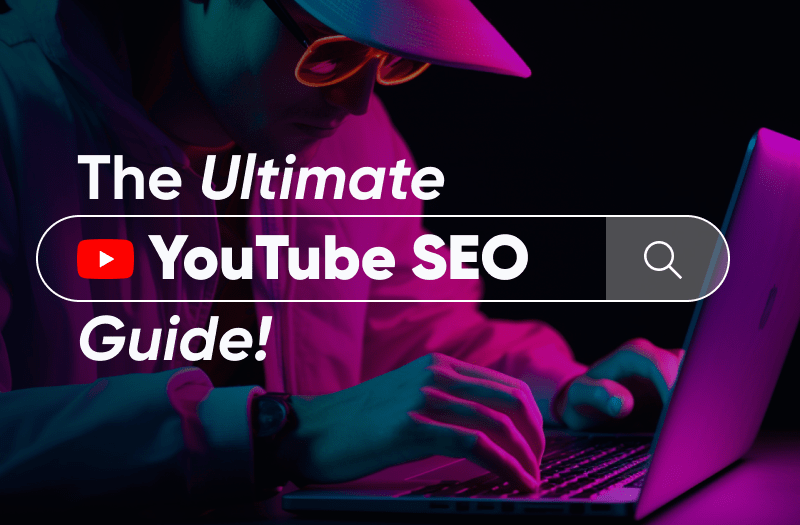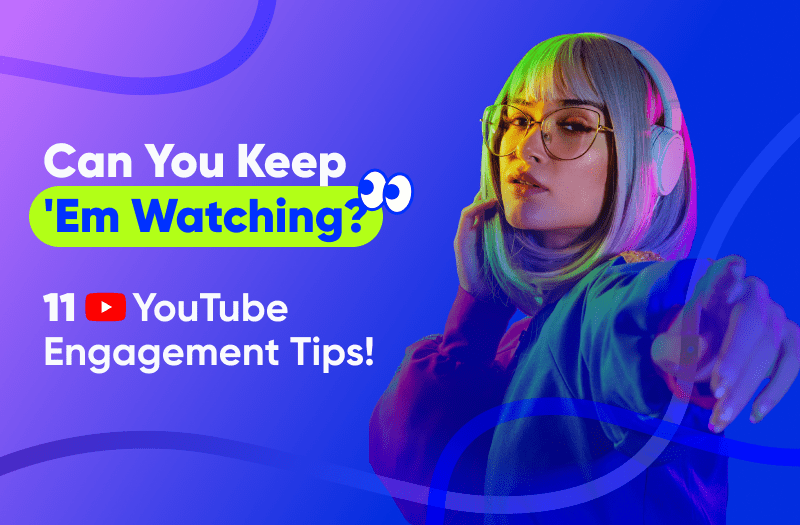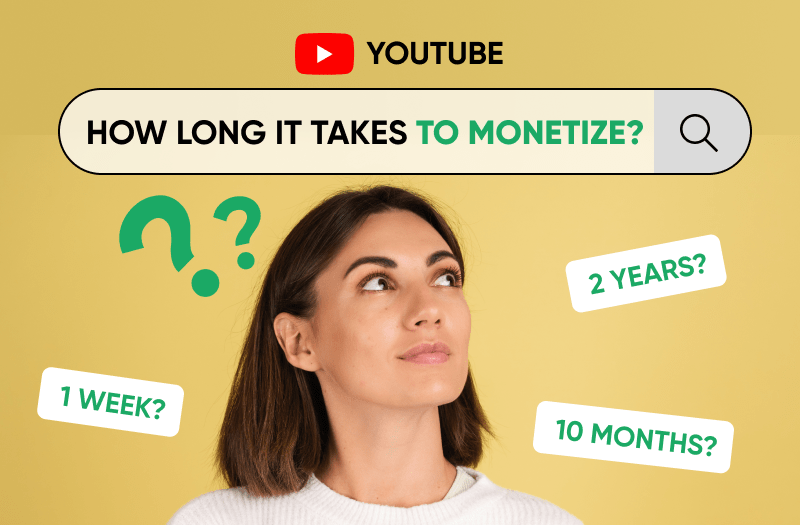
How long does it take to get monetized on YouTube? And more importantly, how can you make it happen faster? Let's find out!
Author – Olha Kapinos
Olha is a Creative Economy Consultant at AIR Media-Tech. She analyzes creator growth patterns and tracks what actually helps new channels get monetized. In this article, she breaks down how long it really takes to reach 1,000 subscribers and how to get there faster.
When you're new to YouTube, you might wonder if it's normal to gain subscribers slowly. It can be emotionally draining to make videos for months or even years without reaching the 1,000 subscribers needed to start earning money. But is this usual or unusual? This article will give you the answers and show you how to speed up the process of making money from your YouTube channel.
How Long Does It Take to Earn Money on YouTube?
Yes, it is true that there are some creators who reach 1,000 subscribers in just a week. But others put in months or even years of hard work, and let's be real, most creators never hit that target. It's challenging, but not impossible.
The timeframe for getting monetized on YouTube varies. It depends on factors like the type of content you create, your upload frequency, your familiarity with YouTube algorithms, and many other things that shape your YouTube strategy. Even for one creator who manages 3-5 channels it takes different time to get to that benchmark on each channel.
So, don't stress if you're not hitting 1,000 subs quickly. On average, it takes about 15.5 months, according to the data on the VidIQ channel. So, if you feel like you're falling behind, don't worry. It's all part of the process, and it's absolutely possible to speed it up. The good news is that there are lots of creators who have managed it, and today we'll share tips on how to start earning money on YouTube faster.
How Can You Make Money on YouTube Faster?
To grow on YouTube, you need to understand what it wants, how it operates, and what it requires as a platform first. There is no other way to make YouTube work in your favor if you don't align with its needs.
YouTube's goal is pretty straightforward - it's all about delivering the right video to the right person at the right time, ensuring a high-quality viewer experience. And the first thing to do here is to make your content visible on the platform. For that to happen, YouTube needs to understand what your content is about and what people will be interested in watching it.
Now, let's build a true friendship with YouTube algorithms, starting with the basics. While the YouTube algorithm considers a wide range of factors, there are three key triggers that take priority:
- Watch Time: The more time viewers spend watching your video, the better. YouTube favors videos with high watch time, as it indicates that viewers find the content valuable.
- Relevance: Your video's relevance to a viewer's search query or interests is also important. If your video closely matches what the viewer is looking for, it's more likely to show up in their search results.
- Engagement: Likes, comments, and shares matter. A video with high engagement is considered valuable to viewers and is more likely to be promoted by YouTube's algorithm.
To understand YouTube algorithms more, check out our guide here. This will help you align your content strategy with the YouTube platform, making it your ally rather than a foe to battle against.
Look Around, Do Research
Now you know a bit more about what the algorithm wants, but there is one more player in this game - your YouTube audience. What do they want? Until we are able to read minds, there is only one way to find the answer - research. Without it, you'll likely make mistakes that slow down your pace towards monetizing on YouTube.
Start by doing keyword and topic research. This helps you understand who you're making videos for and what they're interested in. A good place to begin keyword research is the YouTube search bar. Type in related words and see what suggestions pop up. These suggestions reflect real things people are searching for, giving you insight into popular topics.
Once you've got some keywords, you can use tools like VidIQ, Keywordtool, and Google Keyword Planner, to refine them. These tools show you things like search volume and competition, helping you choose the best keywords for your content.
The goal of all this research is to make sure your videos get seen. This complete YouTube SEO guide can help you with that. After you're done with this keyword research, make sure to include them in your video titles, descriptions, and tags. This way YouTube will understand what your content is about and put it in front of the right eyes.

Watch Competitors
As you were searching for keywords, you probably noticed some successful creators in your niche on YouTube. Take some time to watch their videos, but watch them with a purpose. Try to figure out why they do what they do.
- Why did they choose that title?
- Why did they use that thumbnail?
- Why did they start their video like that?
- How do they keep their audience interested?
- What do their viewers say in the comments?
Start by checking out about 10 channels that are doing well. Our goal isn't to copy them but to understand their strategies. Learn more about researching your competitionin this article.
Choose Your Format
So, what kind of videos should you make to reach 1,000 subscribers faster? YouTube offers different types like live streams, regular videos, and shorts. You don't have to do them all. Just pick one main focus. If you have extra time, you can try out other types too. While shorts and live streams are in huge favor of YouTube algorithms, regular videos are still super important. So, focus on what works best for you!
When deciding what to make, think about what you like to watch and how you want your viewers to feel.
Make Them Click
When you have your video out there, you want people to click on it. One way to encourage that is by working on your thumbnails. They are key to getting people's attention. It's best if viewers can tell what your video is about just by looking at the picture. Here are some easy ways to make your thumbnails better:
- Use up to 5 words to explain what your video is about.
- Add pictures that relate to your video.
- Get in touch with us for cool AI-generated images that match your video and appeal to your viewers.
Sometimes, the adjustment in your thumbnail strategy can make a big difference.
Keep Them Watching
So, they've clicked on your video. Now, let's make sure they stick around till the end. This is all about watch time, which tells YouTube if you're providing a good user experience. Here are some tips to boost your engagement rate on YouTube:
- Script Your Videos: Plan ahead and script your videos to avoid rambling and keep your content on point. Check out the best practices for creating a great video script.
- Edit Thoughtfully: Be critical during editing. Ask yourself if each part is truly useful or entertaining. If not, cut it out.
- Change Perspectives: Keep things interesting by varying camera angles and perspectives. Give your audience a fresh look now and then.
For more tips on increasing your watch time, check out these 11 tips on improving your YouTube engagement rate.

Pace it Up
Remember this: quality is important on YouTube, but don't try to be perfect. The fastest way to reach your goals is by taking action right away. You'll learn as you go along. Start with a simple setup, like using your phone and mic that delivers good-quality sound. Sound is what really matters, and you can learn how to improve it here. Remember, it's better to do something than to wait for everything to be perfect.

Don't worry if you can't post every week. You can upload every other week or try continuous streams to keep engaging with your audience. The important thing is to get into the habit of putting content out there regularly.
Study What You've Done
Give your videos some time after you upload them and then review their performance. Some videos might become popular right away, while others may take a few months. Avoid making big changes too soon. If, after a few months, you see that your videos aren't doing well for certain keywords or topics, then you can think about changing titles, descriptions, and thumbnail images.
You can check out some important stats like:
- Watch Time: This tells you which videos are keeping people watching for longer, so you can make more of that kind of content.
- Audience Retention: It shows you where people are getting bored and clicking away from your videos, so you can work on those parts.
- Traffic Sources: This tells you where your viewers are coming from, so you can make content that suits them better.
By keeping an eye on these stats, you can learn a lot about what's working and what's not, and make your videos better to start monetizing on YouTube faster.
How Much Money Do You Make on YouTube with 1000 Subscribers?
What can you expect when you hit that 1,000-subscriber milestone and start making money on your channel? Well, it also varies a lot and depends on many factors. Things like the topics you cover and where your viewers are from play a big role. There are hidden factors too, like certain niches earning more, the timing of your payouts, and RPMs (revenue per thousand views). On average, channels with 1,000+ subs can earn a couple of hundred bucks from YouTube monetization alone.
Let's dive into the details that affect how much money you can make on YouTube.
- Your YouTube Niche: Different types of channels earn different amounts from ads. Channels covering finance, business education, and similar topics usually get paid more for ads compared to channels about gaming, fitness, or cooking. Advertisers are willing to pay more to reach audiences interested in certain topics, affecting how much money you can make from ads.
- Audience Location: Where your viewers come from also impacts your earnings. If most of your audience is from places like the United States where people earn more, you'll likely earn more from ads. But if your audience is from places with lower incomes, your ad revenue might be lower. It's all about advertisers wanting to reach people who can afford their products. So, understanding your audience's location helps you understand your potential earnings better.
- Video Engagement Rate: How engaged your viewers are with your videos really affects your ad earnings. Longer videos with more ads and higher viewer engagement tend to make more money for every thousand views. For example, if you have two videos with a similar engagement rate — one that's 10 minutes long and another that's 20 minutes long — the longer one might make more money since it likely has more ads.
If you want to know more about how much money you can make on YouTube with 1,000, 10,000, or 100,000 subscribers, and other ways to earn on YouTube besides monetization, check out this article.

Lastly, just keep creating. Even if it feels like you're doing everything right but things aren't working out, don't give up. There's always room to improve, so keep trying new things. Someday, you'll reach those milestones like 1,000 subscribers, then 10,000, 100,000, and more, making your dream a reality.
It's important to have that mindset of always trying to grow. And remember, AIR Media-Tech is here to help with dozens of tools and over a decade of experience helping creators reach billions of views. Text us here to join the AIR Community and grow faster.




